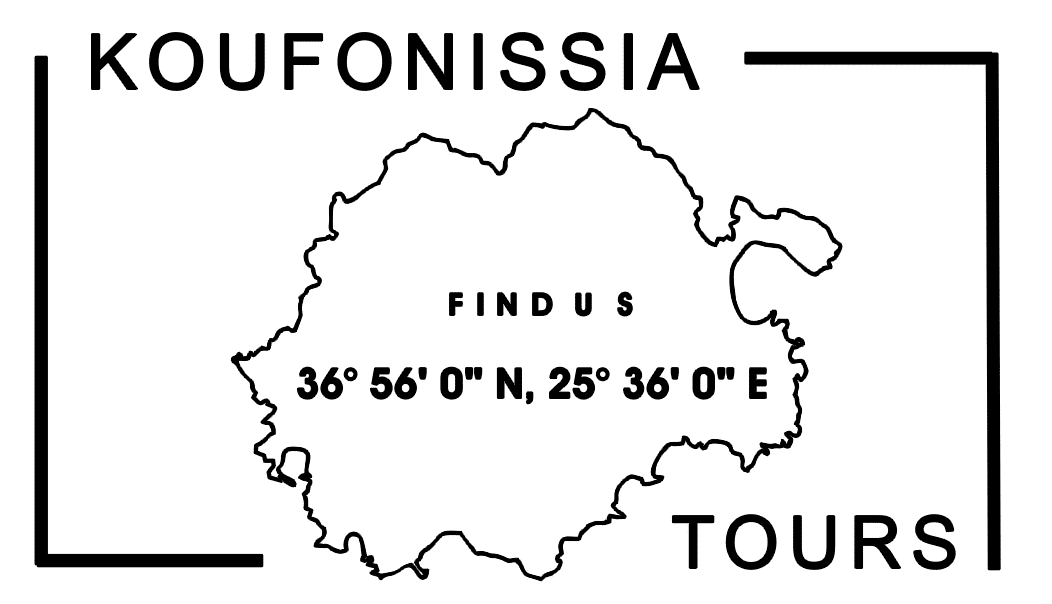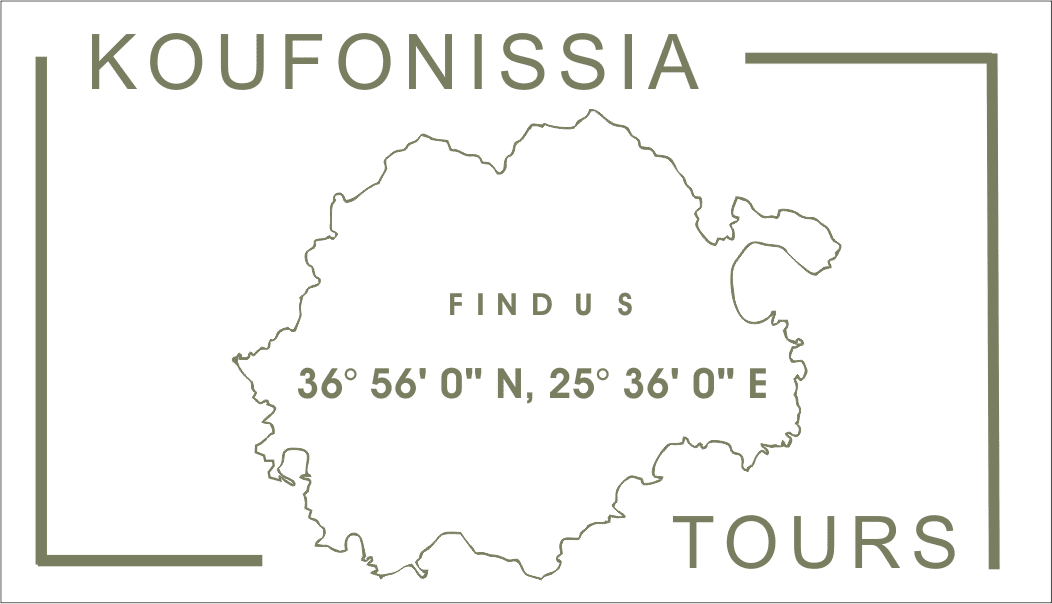The islands belong in the group of Mikres Anatolikes Cyclades.
Koufonissia
Welcome To Koufonissia
The island group is southeast of Naxos and west of Amorgos.
The inhabited Pano Koufonissi is separated from Kato Koufonissi by a 200 – meter wide strait.
Pano Koufonissi, which is the smallest island in the Cyclades (3.5 squ.km), is also the most densely populated and the largest part of its population consists of children and young people.
It has a kindergarten, primary and secondary school and a vocational high school.
The main economic activity is fishing and farming.
The island has the largest fishing fleet in Greece in proportion to its population.
Because of its size and the absence of steep hills, the island can be explored on foot with ease.
On Pano Koufonissi there is no beach without its own attraction.
The aquamarine water and total lack of rocks in the sea make you feel that there are huge pools waiting for you.
On the south side of the island all the way to the east side there are sandy beaches with waters deepening very gradually, which makes them perfectly safe especially for children who love them and spend hours in the water, so parents can also enjoy their swim.
You can be provided with maps at the Koufonissia Tours so you won’t miss any of the magical places of the island, such as the Pisina (Pool), To Mati tou Diavolou (Devil’s Eye cave) or Galla (Milky Beach) and the walking paths.
If you are not into walking you may hire a bike or go round the coast or from one beach to the next in the excursion boat or our minibus.
In any case bringing a car is not necessary.
On the island you will also find:
- Cashpoint
- Pharmacy
- Doctor’s surgery
- Marina
- Gas station
- Soccer field
- Volleyball and basketball court
- Gym
- 3 mini markets
- Bike hire
- Post office
More About Koufonissia
There are transport links by ferry to Piraeus year round, while daily services to the other islands are carried out by the legendary Skopelitis, which sails from Amorgos to Koufonissi, Schinoussa, Iraklia, Naxos and back again every day.
Apart from the regular services there is the taxi boat, which meets all emergency transport needs to Naxos and the surrounding islands.
On the islands south coast stretch, from Pariano on the west side to Pori on the east side, the beaches are fascinating. Crescents of golden sand interchange with wild looking caves that the tide has carved into the rocks.
In general terms, the further east you go the better the beaches are – and the denser the greenery comparatively is.
Bear in mind that the seaside road, in practice, has proved to be longer that it appears to be on the map but it definitely is a more beautiful road than the one that runs through the island. Beside the pathway you will find “ammothines” (small hills of sand where very rare flowers with white lilies grow), that you can only find in the Cyclades.
Also, in Pano(Upper) Koufonisi, look for the “Pool” which is a stone tank filled with seawater that will offer you a memorable swimming experience.
Do not forget an excursion by caique to Kato (Lower) Koufonisi.
The coarse sand beaches are ideal for nudism and isolation.
In the summertime opens a tavern.
Koufonisia have been populated continuously since the Prehistoric Age.
Excavations in the area of Pano (Upper) Mili brought to light significant findings of early phases of Cycladic Civilization.
Perhaps the most significant finding is an earthen shaped pan with an engraved nine- rayed star, which is presently kept in the museum of Naxos.
A second excavation sight in the south end of the East Coast revealed findings from the Hellenistic and Roman times.
As research has proven, the neighboring island Keros, which is worth visiting constitute a significant center of Cycladic Civilization (3000-2000 BC).
Throughout the centuries that followed, Koufonisia were subjected to the common fate of almost all the Cycladic islands, which was, being the apple of discord for various pirates.
The present day village seems to have been built on the site of a large Roman settlement.
The islands’ history is not very different from that of the rest of the Cyclades. They were in turn under the Venetians and the Turks and were incorporated in the newly founded Greek state in 1830, together with the rest of the Cyclades.
Whereas the postwar (WW2) population of Koufonissi was around 1000, a large part gradually moved to the cities or went to sea.
Today the island has 440 inhabitants.


